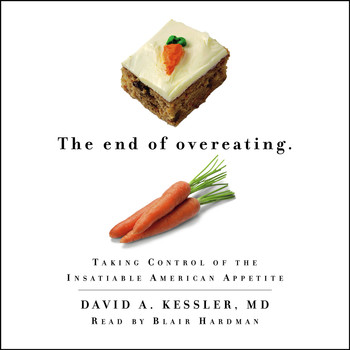In the End of Overeating, David Kessler discusses how to reverse the habit. Here are his four steps for you to practice on your own.
1. Awareness
“Being aware means that you have a conscious knowledge of the risks of a situation.” – David Kessler
To become full aware, first you must ask yourself, what are the situations you find yourself in that cause you to eat? What are the urges you sense before giving in to a trigger?
You must recognize those urges for what they are then recognize this as your opportunity to make a decision.
When you realize that YOU have the power to make a decision and there’s actually a choice to be made, it allows you to consciously be in the setting and the response to the trigger you would normally have is no longer automatic – it is now part of your conscious thought.
So rather than going to your favorite Italian restaurant and just ordering your normal pasta dish without looking at the menu, you sit down, relax, look at the menu and find something on there that is healthy.
2. Engage in Competing Behaviors
You must develop & learn alternative responses to cues. For example, do not go straight to the kitchen cabinets to snack when you get home. Instead you develop new behaviors such as having a protein shake and some carrots before you go home, leaving you fulfilled, then spending time with your family immediately upon arrival. Or perhaps you start taking a different route to work, thus avoiding the bagel shop you normally stop at.
But these competing behaviors must be planned in advance. You must be prepared by packing the snack to bring with you each day, or you need to eat breakfast at home so you don’t consider stopping somewhere because you are hungry.
3. Formulating Competing Thoughts
These are thoughts that compete with and quiet the old ones. These thoughts will help you change the way you feel about a stimulus. Rather than thinking about how good the cupcake tastes, they help you to realize that the cupcake will contribute to weight gain, or pushing you further from your goal.
An example of this would be to say to yourself, “If I eat this pizza, I am going to feel fat and depressed.” Another example would be to think to yourself, “I can do this. I have self control.”
4. Support
Having others around to support you and help you avoid cues as well as acknowledge success makes the process easier for lots of reasons. Of course there is the moral support of friends there to cheer you on and help you stay on track. But you also don’t have people who are hard on you for changing your lifestyle.
There’s other reasons that you may not have thought of as well, such as:
You do not want to overeat in front of people who are aware of your goals
You do not want to be embarassed, feel like a failure or let anyone down
As Kessler says, ” Social engagement itself can serve as a competing behavior or substitute reward.” By serving as a competing behavior he means that if you are at an event where there is food, you can distract yourself from the triggers by socializing. (This is how I avoid wedding cake – I know when it’s coming out and I strategically hit the dance floor.) And using social engagement as a reward he means that you can reward yourself by going to the movies with a friend if you stick to your plan all week.
Use these steps. Practice them all week. Put them to use. You’ll learn more next week on how to rehabilitate yourself from overeating.
This blog is part of a seven part series.
Read the first blog here: Treating Overeating
Read the third blog here: creating rules
Your Coach,
Kyra
P.S. How does this advice help you?
How have you reversed your eating habits?
